Rules for designing and modeling a children’s apron + photo ideas for inspiration
Basics of sewing to learn is not only useful, but also interesting. To achieve good results, you need to learn a lot. Learn how to make a simple product according to all the rules. Pattern apron for the girl does not contain complex elements, and therefore begin to study sewing art is best from her.


Bright, floral colors – today it will be fun to cook!
Apron – types and features
By appointment, they are kitchen, school, special. As a decoration can be used applique, embroidery, obtachka, braid. By type of cut they are divided into:
- tselnokroenye (the lower and upper part are one whole);
- with a breastplate;
- on the belt.
For many people, the apron is part of the national costume and is decorated with braid, embroidery, ribbons, and shoe. Its version is an apron, it does not have a breastplate and is a rectangle made of cloth with a belt attached to it.
It is interesting. At first they were worn by men only. Richly decorated with patterns worn by notable people, aprons are more simply intended for servants. Over time, this garment has been modified and even became part of the gymnasium uniform.

In Russia, as in all European countries, the apron is an important part of the national costume
We sew an apron with our own hands step by step
Preparation of the pattern for cutting is the application of structural and shaped lines. In the drawing, you need to specify the amount of allowances, sign the middle of the apron, the fold line, specify all the details and their number.

Everything is like mom’s!
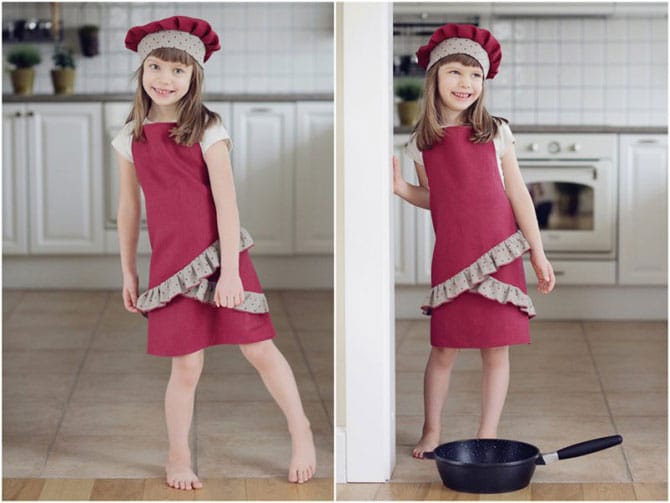
You can supplement the outfit with a hat of a cookbook

Pattern in Patchwork Technique
Removing measures and drawing a drawing
Measurements are carried out on the figure of a man dressed in a light, tight fitting underwear. When removing the measurements, it is necessary to stand straight and without tension, with hands down, while a thin waist is tied at the waist.
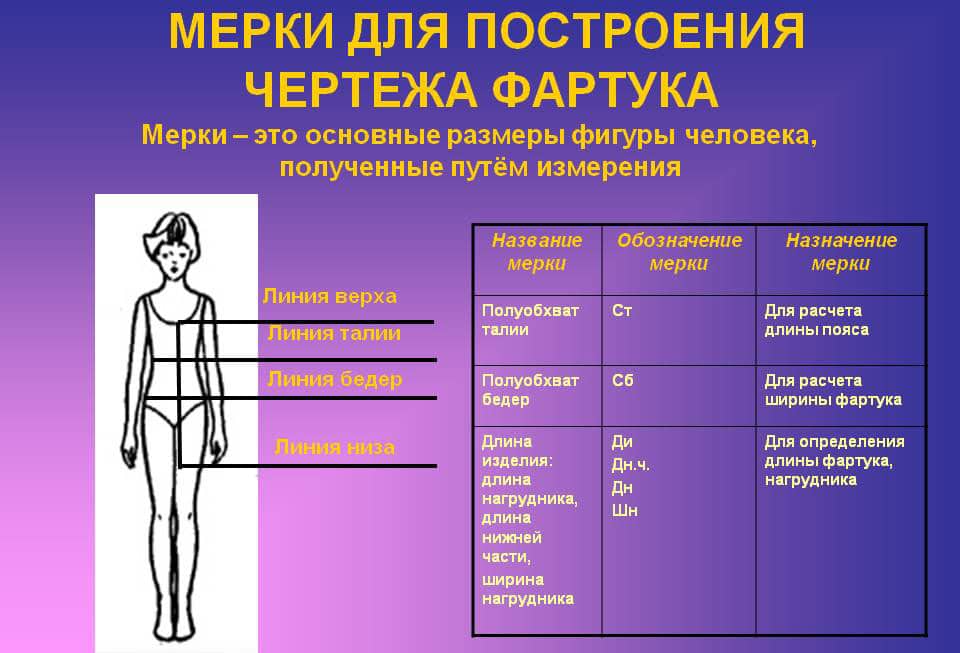
On how correctly the measurements will be taken, the correctness of drawing the drawing depends
The measurements of the half-grips, as well as the distances between the centers, are recorded in half.
The main lines necessary for the construction of patterns, pass along the waist and hips. Therefore, it is necessary to measure the hemisphere of the hips (POB) and the waist hemisphere (POT). In addition, you need to determine the height of the upper part of the bib (TG) and the length of the lower part of the apron (TN). TG is measured from the waist to the chest line. The TN is measured from the waist to the knee.
The POT measure is needed to calculate the length of the belt, the PBO is needed to determine the width of the apron. The width of the breastplate is determined at the chest level.
- Draw a vertical straight line on the millimeter paper – this will be the midline of the product and the fold line.
- Mark on this straight line an arbitrary point T (slightly above the middle of the sheet). Up from this point, set the distance of the TG, from the point T, measure the distance TH.
- From the points Г, Т and Н to the right, draw horizontal axial lines – the line of the chest, waist and bottom.
- Postpone the segment ГГ1 (it is equal to half the breadth of the breastplate).
- TT1 = PSB / 2 + 6. From point T1 draw a vertical axis to the intersection with the bottom line. The intersection point is H1.
- From the point T1, lower the vertical axis to the intersection with the waist line, set aside from the point of intersection 4-5 cm to the right and designate point T2.
- From the point T2, draw a vertical line and mark the segment T2K = 6 cm. Distance KK1 = KK2 = 18 cm.
- Circle it with a thick line.
- To construct straps, draw a rectangular strip 4 * 45 cm. The length of the belt is (POT * 2) +30 cm, its width – 6 cm.
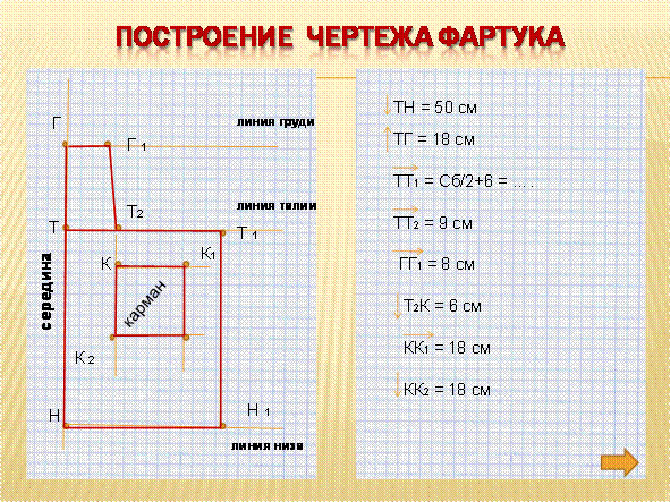
Pattern drawing
Cutting and preparation of parts for processing
In the drawing, the part numbers are indicated, denoting the line of fractional and bend. The direction of the share should be parallel to the edge of the fabric. If the pattern has undercut, they cut out. Since cotton and linen material shrink after washing, the fabric needs to be washed, dried and ironed through a wet ironer. All these operations are called preparation for cutting.
Next, aligning the edges, the fabric is folded in half, while the fabric should not be skewed. Necessarily combine a fold of a fabric and a fold of a pattern.
Important. If the pattern consists of several elements, take into account the direction of the pattern.

It is important to choose the right fabric
The allowances should be the same size, then when the slices of the cut parts are combined, the seam lines coincide. The marking of the allowances takes place using a centimeter tape and chalk. For the bottom of the product, leave an allowance equal to 4 cm, for the remaining sections – 1.5 cm. The details of the pattern are pinned to the underside by the pins and cut out.
Sewing and finishing
Fabric for home “overalls” should be strong, as it will have to be washed often. Flax, cotton and jeans are quite suitable.
The amount of necessary tissue is calculated based on the length of the product (equal to the length of the lower part and the length of the breastplate). Do not forget to add 4 cm to the allowances.
All the details are swept away, after which they do the fitting. If there are no shortcomings, all the details are sewn on the sewing machine.
Children’s apron – patterns for all tastes
Do you think drawing a drawing is too long and tedious? We offer three ideas how to sew an apron easily and simply.

Patchwork
Apron from rags
- From the variegated scraps you can create an unusual apron. Here you do not need a pattern for a child’s apron, you need to cut out multicolored squares from the fabric for sewing.
- First you need to determine the size of the components. From squares with a side of 10 cm you can sew a large apron. For children’s apron, smaller flaps (or of the same size, but in each row there will be less) will do.
- The product consists of 6 rows. First, squares the squares into strips, and then stripes into the whole canvas.
- There are 6 squares in the bottom three rows. In each higher row the number of squares decreases, in the uppermost there are only 2.
- When all the strips are sewn, it will only be necessary to trim the braid with a braid and sew the ties at the top and sides.
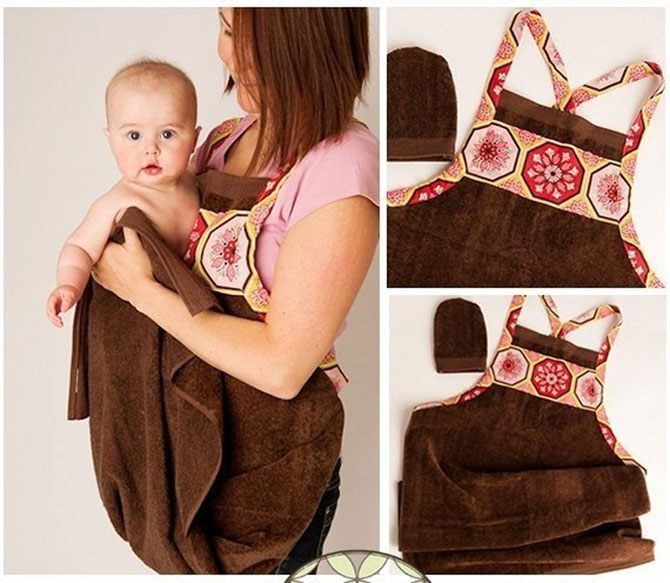
An apron of a towel
For sewing an apron, you can use a kitchen towel with a thematic pattern. If the base is sewn from a variety of colors, pockets and trim are better made monophonic.
“Transformations” of old things
From a man’s shirt it will turn out an excellent apron for kitchen. Cut off the sleeves and the backrest, treat the sections with a seam to the fold. At the waist level, sew a thin belt. Now you can go to prepare dinner!

You can sew it from an old dress or jeans
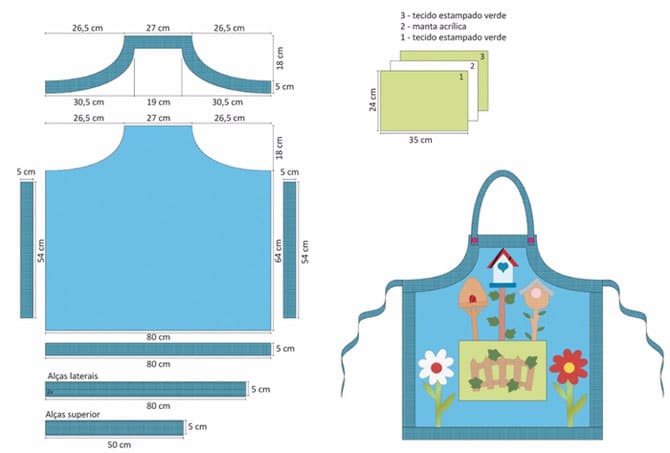
The application can be cut out of scraps of cloth, and you can buy ready-made in the store for sewers

You can sew from laminated cotton, in this case you do not have to spend time removing stubborn stains
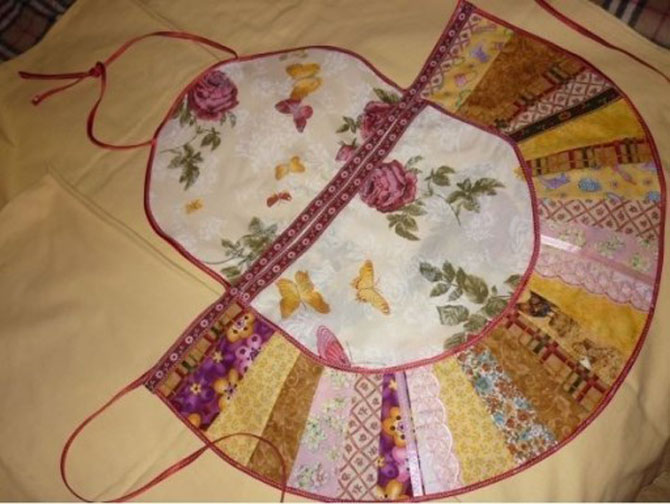
Elegant apron sewn in the technique of patchwork sewing
Photo ideas for design and decor of children’s aprons

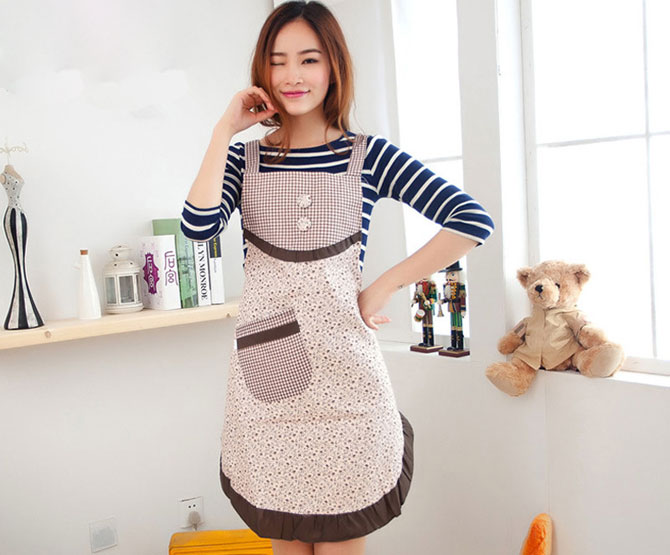
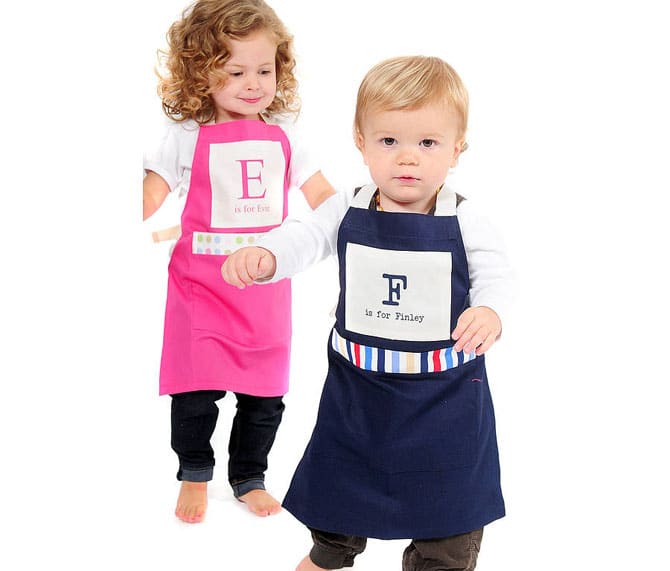
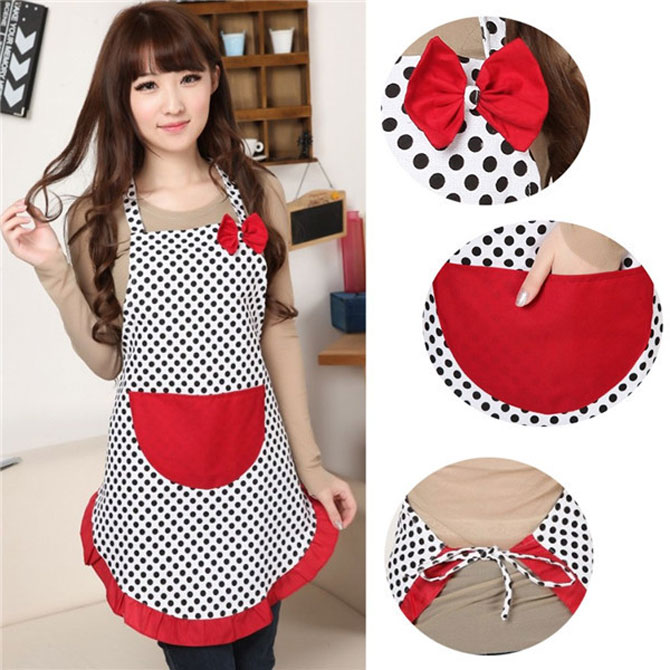
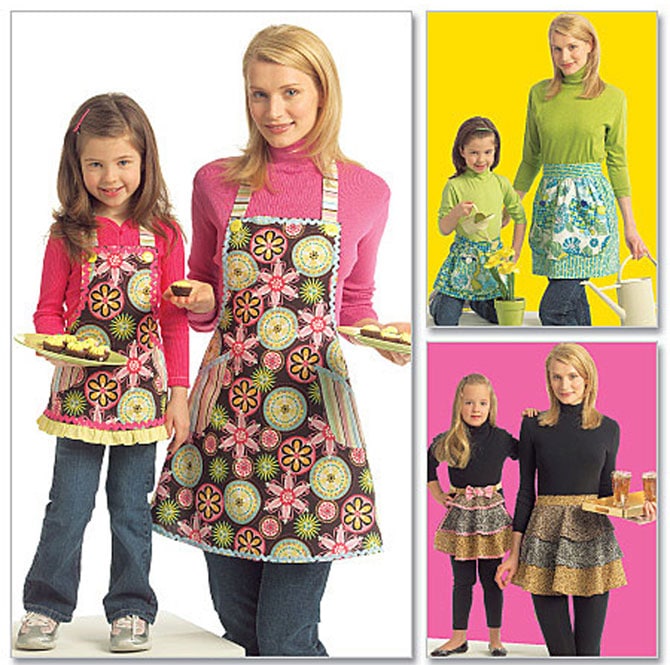
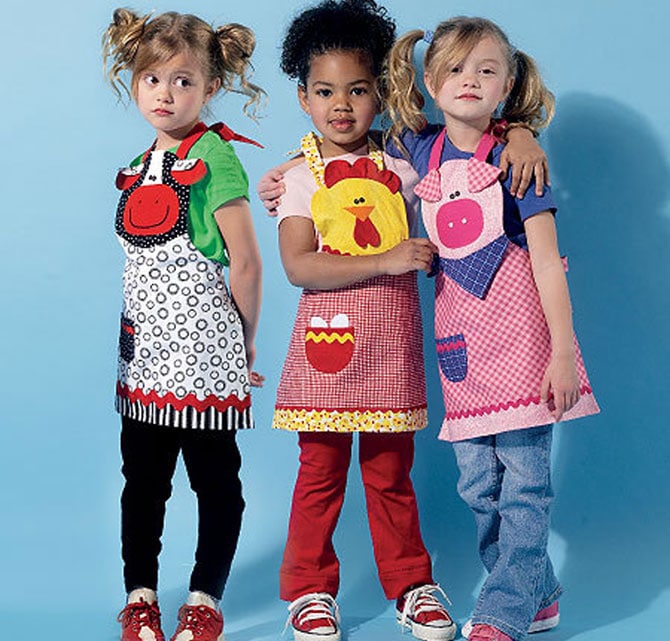

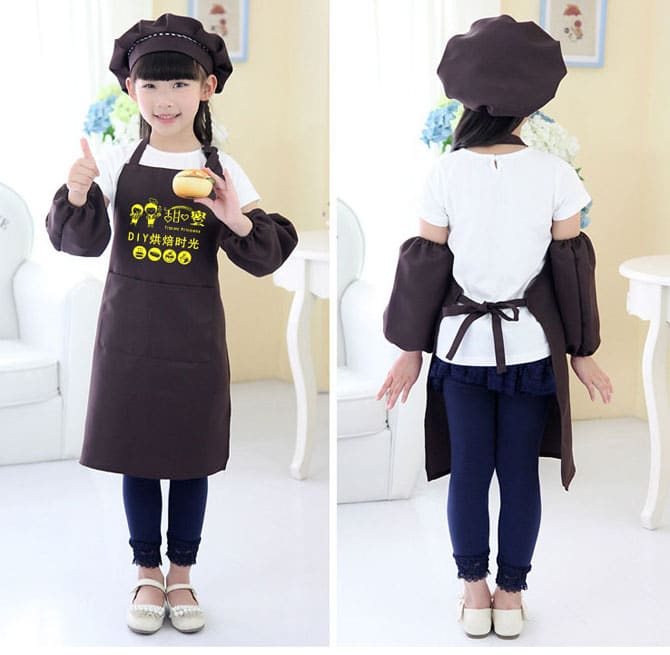
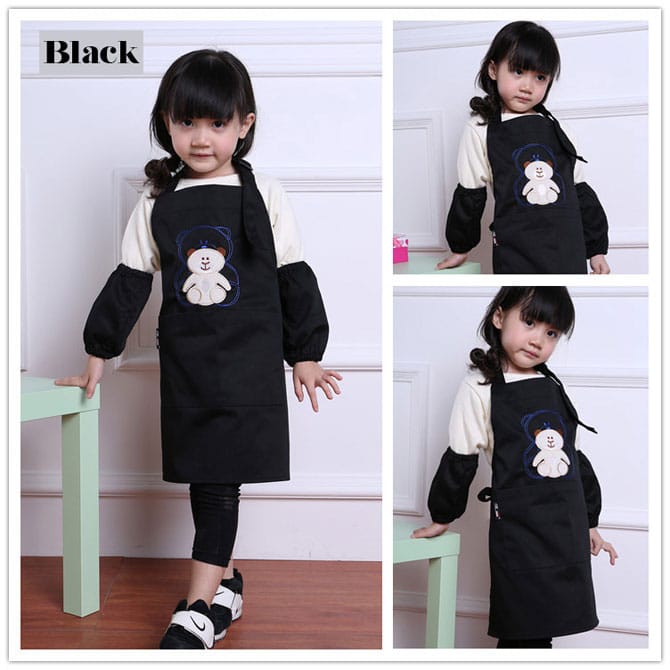
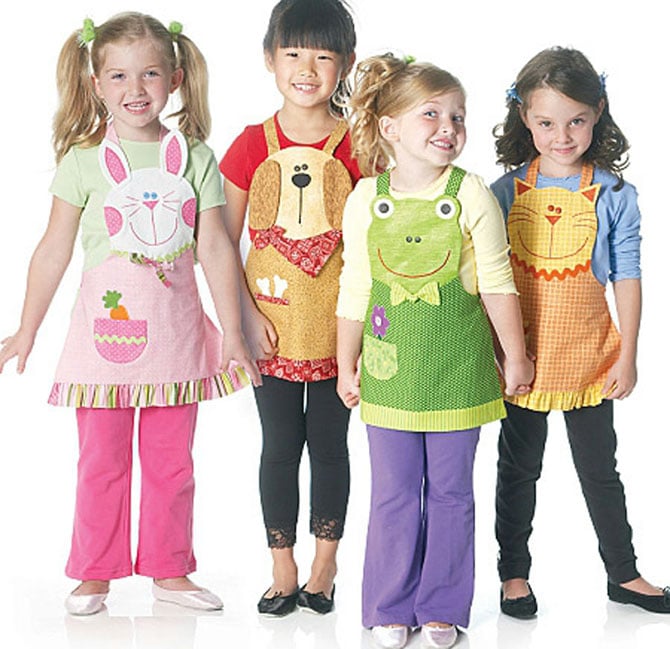
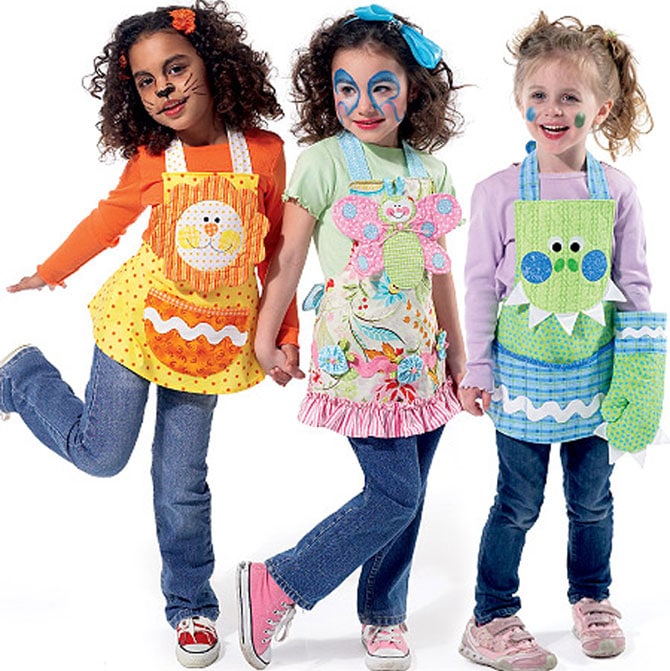
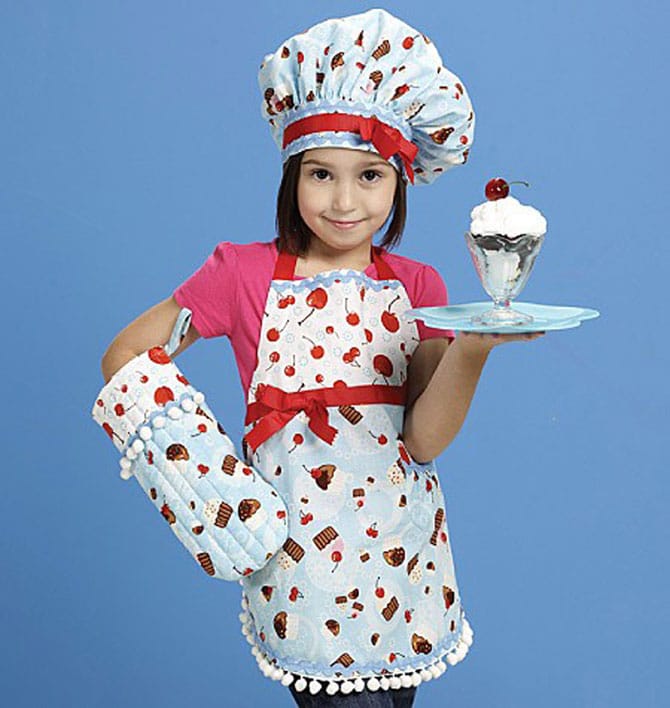
Video: drawing an apron drawing – open lesson in class 5
Without an accurate pattern it is impossible to sew a quality product. Build a pattern-base by your standards, and you can model a variety of styles. And you can find a suitable version of the finished drawing and cut the product over it. Now you can be stylish and fashionable even in your own kitchen!


